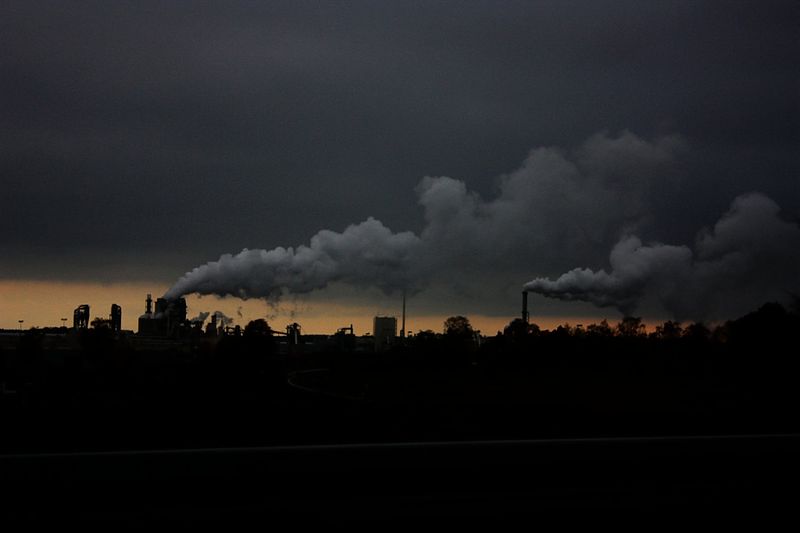

Human Side of the IPCC report
This term I am rewriting my climate change lectures. Not because the fundamentals have changed, but because the first part of the 5th Assessment Report of the Intergovernmental Panel on Climate Change (IPCC) was released in September. The IPCC was founded 25 years ago to provide authoritative assessments on the emerging problem of climate change. The first report was published in 1990, and the follow-ups, roughly one every six years, have grown in volume, complexity and indeed stature alongside our growing realisation of the complexity of the climate system. The significance of the report to the international community is indicated by the fact that the Nobel Peace Prize was awarded to the IPCC in 2007.
The first of three reports, WG1, released in September, concerns the “Physical Science basis” underpinning climate change, and is the one that causes most rewrites of my lecture notes. The other parts, to be released next year, cover “Impacts, adaptation and vulnerability” and “Mitigation of Climate Change”. Media attention leading up to the release focussed on both the scientific conclusions and the process by which they were reached. In fact the whole IPCC process has been open to more public scrutiny this time around than ever before.
I could describe the IPCC in terms of activity. The IPCC does not “do” new research. It collates and evaluates science from across the global community. These activities are at the highest end of the “learning skills” we would look to develop in our students, and the members of the IPCC have honed these skills through years of service as researchers, supervisors, reviewers and journal editors. The climax of the process is the Summary for Policymakers meeting, which for WG1 was in Stockholm. Here, over the course of a week, each and every word of a summary of the full report is scrutinised by governments and scientists. This year we were able to watch as the number of words agreed increased far more slowly than the amount of time left for agreement, and eventually saw the sessions lasted all night in order for all parties to agree on 18 headline statements.
Or I could describe the IPCC in terms of numbers. 3000 nominations received by the IPCC for authors; 831 lead authors across the 3 reports (259 for WG1 alone), 60% of these new to IPCC.; 9200 scientific publications from which material was examined, 2/3rds of which had been published since 2007 (the last IPCC report); 54677 review comments received from 1089 Expert Reviewers from 55 countries.
Finally I could describe the IPCC in terms of the investment of time and energy of my colleagues. Many of my peers have been involved for the past two or three years. Some of them were present in Stockholm, arguing over each individual word. As the week went on, their tweets became increasingly full of reports of lack of sleep. Towards the end, much attention was paid to what appeared initially to be a hallucination produced by tired minds, but turned out to be a mouse living under the podium on the stage. Said mouse now has his/her own twitter feed and continues to discuss comments made on “his” report (@ipccmouse). So far I’ve always held the view that it’s one of those jobs that I’m very glad someone does, but equally glad it’s not me. But why do people serve on the IPCC given the immense amount of time and energy required and the not-inconsiderable chance of negative and personal media attention? A quick survey revealed that many consider it a huge honour to be asked. They also valued the chance to have in depth conversations about the latest results with colleagues from around the world, and the opportunity to be involved in writing a report that will actually be read and used outside the academic research community. That doesn’t sound so bad actually. Maybe next time…
This term I am rewriting my climate change lectures. Not because the fundamentals have changed, but because the first part of the 5th Assessment Report of the Intergovernmental Panel on Climate Change (IPCC) was released in September. The IPCC was founded 25 years ago to provide authoritative assessments on the emerging problem of climate change. The first report was published in 1990, and the follow-ups, roughly one every six years, have grown in volume, complexity and indeed stature alongside our growing realisation of the complexity of the climate system. The significance of the report to the international community is indicated by the fact that the Nobel Peace Prize was awarded to the IPCC in 2007.
The first of three reports, WG1, released in September, concerns the “Physical Science basis” underpinning climate change, and is the one that causes most rewrites of my lecture notes. (The other parts, to be released next year, cover “Impacts, adaptation and vulnerability” and “Mitigation of Climate Change”. Media attention leading up to the release focussed on both the scientific conclusions and the process by which they were reached. In fact the whole IPCC process has been open to more public scrutiny this time around than ever before.
I could describe the IPCC in terms of activity. The IPCC does not “do” new research. It collates and evaluates science from across the global community. These activities are at the highest end of the “learning skills” we would look to develop in our students, and the members of the IPCC have honed these skills through years of service as researchers, supervisors, reviewers and journal editors. The climax of the process is the Summary for Policymakers meeting, which for WG1 was in Stockholm. Here, over the course of a week, each and every word of a summary of the full report is scrutinised by governments and scientists. This year we were able to watch as the number of words agreed increased far more slowly than the amount of time left for agreement, and eventually saw the sessions lasted all night in order for all parties to agree on 18 headline statements.
Or I could describe the IPCC in terms of numbers. 3000 nominations received by the IPCC for authors; 831 lead authors across the 3 reports (259 for WG1 alone), 60% of these new to IPCC.; 9200 scientific publications from which material was examined, 2/3rds of which had been published since 2007 (the last IPCC report); 54677 review comments received from 1089 Expert Reviewers from 55 countries.
Finally I could describe the IPCC in terms of the investment of time and energy of my colleagues. Many of my peers have been involved for the past two or three years. Some of them were present in Stockholm, arguing over each individual word. As the week went on, their tweets became increasingly full of reports of lack of sleep. Towards the end, much attention was paid to what appeared initially to be a hallucination produced by tired minds, but turned out to be a mouse living under the podium on the stage. Said mouse now has his/her own twitter feed and continues to discuss comments made on “his” report (@ipccmouse). So far I’ve always held the view that it’s one of those jobs that I’m very glad someone does, but equally glad it’s not me. But why do people serve on the IPCC given the immense amount of time and energy required and the not-inconsiderable chance of negative and personal media attention? A quick survey revealed that many consider it a huge honour to be asked. They also valued the chance to have in depth conversations about the latest results with colleagues from around the world, and the opportunity to be involved in writing a report that will actually be read and used outside the academic research community. That doesn’t sound so bad actually. Maybe next time…
"




